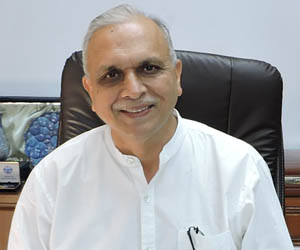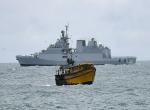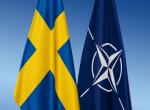Prime Minister Modi visited Vladivostok for the 5th meeting of the Eastern Economic Forum as the Chief Guest on 4-5 September 2019 on the invitation of Russian President Vladimir Putin. The 20th India-Russia Annual Summit was held in Vladivostok following which a detailed joint statement was issued.
Two features stand out. First, Russia’s Far East has been brought into the bilateral equation in a systematic way. This will give a boost to bilateral equations. Second, given the location of Russia’s Far-East at the heart of Asia-Pacific region, India’s engagement with the region will have geopolitical implications as well.
Significantly, PM Modi launched India’s ‘Act Far-East Policy’ to develop economic and commercial linkages between India and Russia’s far eastern regions. Act Far-East Policy is the latest construct in India’s foreign policy, which already has such concepts as Act East Policy and the Indo-Pacific.
Also known as Federal Eastern District, Russian Far East has a population of about six million (2010 census) and a population density of about 1 person/square kilometer. The area is sparsely populated but rich in resources, including timber and a variety of minerals like oil and gas, coal, rare earths, cobalt, tungsten, etc. Bordering with China, North Korea and Mongolia, the region has Japan and USA as maritime neighbours. It has huge strategic significance in the Asia-Pacific context. The principal cities of the region include Vladivostok, which is a free port, and Khabarovsk, Chita, Yakutsk, Ulan-Ude, etc. The melting of permanent frost due to global warming has made the region relatively more accessible than before.
Russian development strategy focusses heavily on the development of its far eastern regions to give a fillip to Russia’s overall economy. The region can take advantage of the Northern Sea Route in the Arctic and the Pacific Coast. The growing tensions between Russia and the West has compiled Russia to look at its Siberian, Northern and Far Eastern regions for further growth and development of the Russian economy. Russian foreign policy and economic strategy places major emphasis on the concept of Eurasia and Eurasian Union.
Poor connectivity and weak demography and lack of funds have prevented the region to develop. Russia has announced a slew of attractive measures to attract foreign investment in the region. According to official data, about 1780 projects worth more than US$ 60 bn have been approved. The region requires far more investment and technology. Lured by the vast mineral wealth of the region, the Chinese have been quick to move into the Russian Far East with investments. There are apprehensions that the growing Chinese influence in the region, including the presence of Chinese population, could pose a long-term strategic threat to Russia. Given the growing partnership between Russia and China, these apprehensions are felt but not openly articulated in Russia.
In order to balance China, Russia is looking to invite other countries to invest in the Far East. Some years ago, it set-up the Far Eastern Economic Forum which has been attended by Chinese, Japanese, Mongolian and South Korean leaders. This was the first time that Prime Minister Modi was invited to the Far Eastern Economic Forum Meeting by President Putin.
The Indo-Russian joint statement issued on the conclusion of Prime Minister’s visit expresses the mutual desire for cooperation to develop Russia’s Far East. As part of India’s newly conceptualized Act Far East Policy, India has quickly announced US$ 1 bn worth of line of credit to promote Indian investments in the region. In August 2019, Commerce and Industry Minister Piyush Goyal visited Vladivostok to identify sectors for cooperation. He was accompanied by Chief Ministers of four Indian states. Already, a few Indian companies have set-up their presence in the region. These include M/s. KGK in Vladivostok in the field of diamond cutting, and M/S Tata Powers in Krutogorovo in Kamchatka in coal mining. ONGC India has been invested in Sakhalin offshore in the Pacific Ocean from which it has been extracting oil for the past two-decades. The two countries are also discussing the possibilities of export of skilled work force from India on a ‘temporary’ basis.
The present volume of Indo-Russian trade (about $12 bn) is much below the actual potential. The access to mineral wealth of Russia’s Far East could redress this issue. The two leaders have expressed their resolve to take the trade to $30 bn level by 2025. This is an ambitious target. If Indian companies invest in Russia’s Far East, the situation could change for the better. In this connection, the announcement that a shipping route between Vladivostok with Chennai will be set-up is a welcome development.
Tourism can be a major draw. Indians are travelling to different places in big numbers. Indian tourists are being sought by many countries. The exotic locations in Russia’s Far East could attract a large number of Indian tourists. It is up to the two sides to take steps to promote two-way tourism.
Geopolitics
Indo-Russian cooperation in the Far East should be seen in the larger geopolitical setting. The joint statement noted the commitment of both sides to “building an equal and indivisible security architecture in Asia and the Pacific region….within the framework of the East Asia Summit and other regional platforms”. They have agreed to “intensify consultations on complementarities between integration and development initiatives in greater Eurasian space and in the regions of Indian and Pacific Oceans”. Russia’s Far East is located in the Pacific Ocean. India’s Indo-pacific strategy, which in Prime Minister Modi’s words is “inclusive”, should reassure Russia.
Russia is understandably wary of the Indo-Pacific concept, which has been propounded by India, U.S., Japan and Australia. However, it is open to the concept of Asia-pacific and Eurasia. India is prepared to cooperate with Russia in the Eurasian and Asia-Pacific space without putting too fine a point on what the concept Indo Pacific means. Eventually, Indo-Pacific and Asia-Pacific may overlap provided Russia’s relations with Japan and US improve.
By focusing on Russia’s Far East and the Arctic, India is positioning itself in the geopolitics of the region. This is a big and bold geopolitical move. India’s focus should be to increase its investments in the region. This will increase its profile and provide more space for maneuver in the Indo-Pacific region. Russia will find in India a counter-balance to China. Japan is also trying to improve its relations with Russia though the pieces slow. Prime Minister Modi’s visit to Vladivostok has many interesting geopolitical implications. Much will depend on how the two sides implement the understandings reached in Vladivostok.
(The paper is the author’s individual scholastic articulation. The author certifies that the article/paper is original in content, unpublished and it has not been submitted for publication/web upload elsewhere, and that the facts and figures quoted are duly referenced, as needed, and are believed to be correct). (The paper does not necessarily represent the organisational stance... More >>
Image Source: https://images.livemint.com/img/2019/09/05/600x338/PTI9_5_2019_000100B_1567684985276_1567685001917.jpg











Post new comment